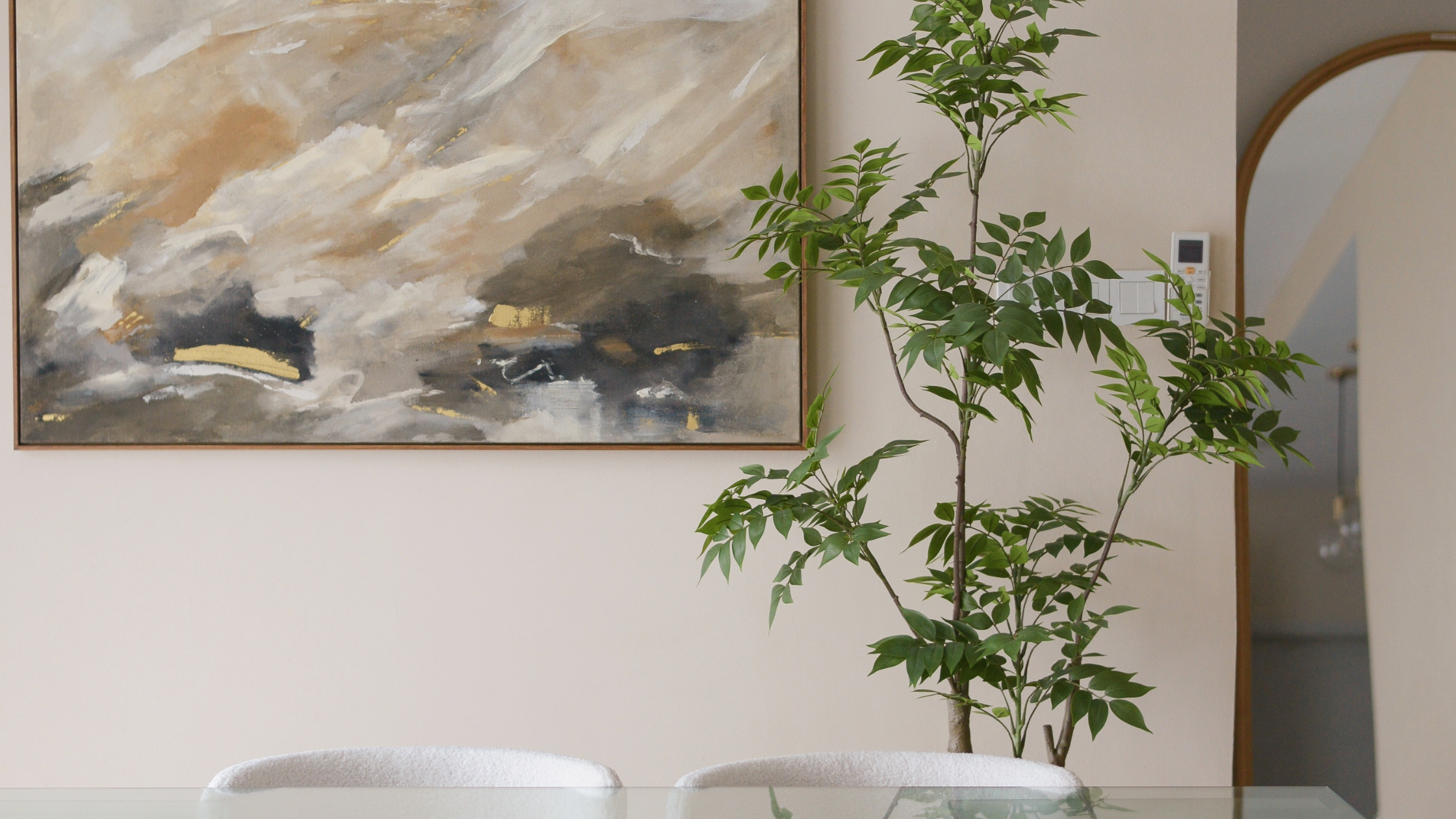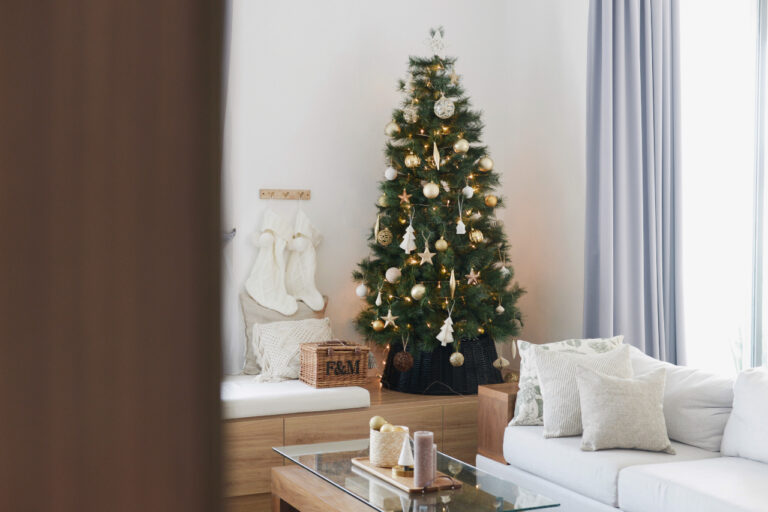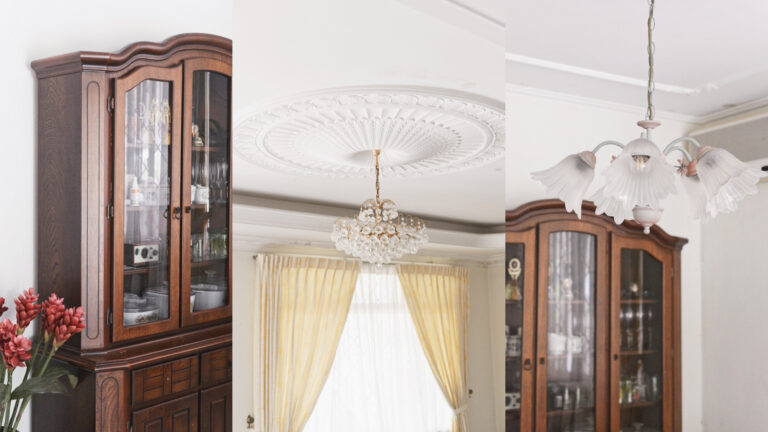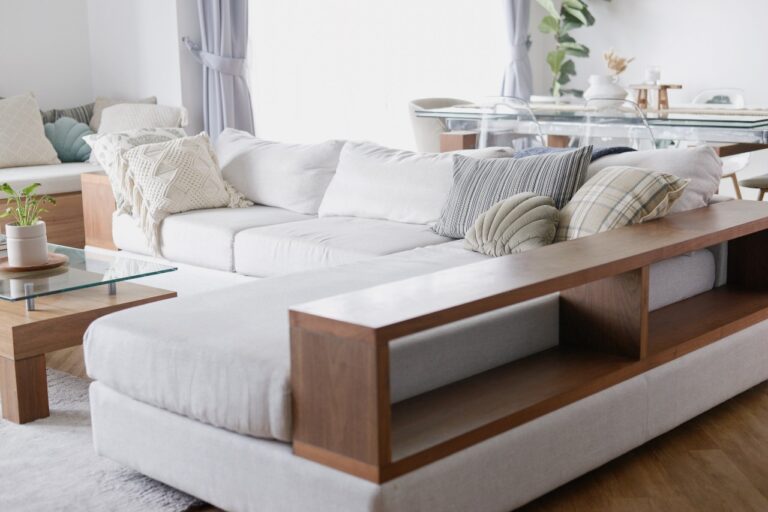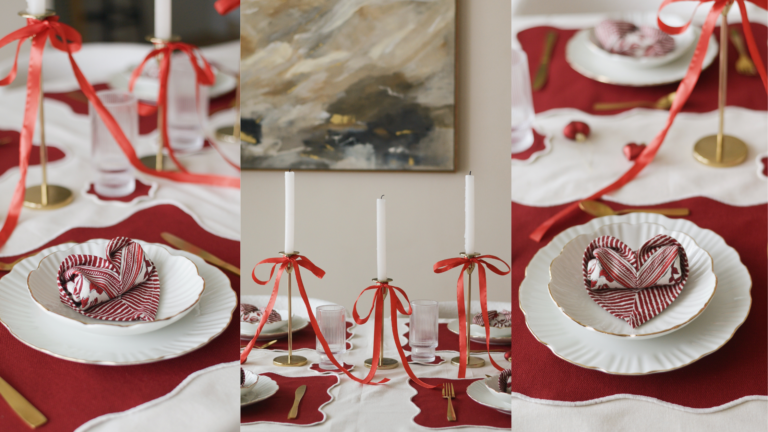Table of Contents
Learn how to choose faux plants that look real – from someone who spent over three hours in stores comparing the most realistic artificial plant options.
Have you ever found yourself staring at a screen of faux plants, wondering which ones actually look real?
If you catch yourself nodding vigorously, well, join the club!
Sure, shopping online for faux plants is easy and convenient… but I really didn’t want to risk ending up with something that screamed fake.
So when it was time for me to buy my first large artificial tree, I decided to do it in person.
I figured if I could see and feel the plants up close, I’d know exactly what to look for next time I shop online.
After spending hours browsing in-store (pretty sure the sales associate thought I was going to move in at some point), I’ve learned exactly what makes faux plants look convincingly natural AND what gives them away.
The best part? I found a faux tree so convincing, even my guests thought it was real! SCORE!
In this post, I’m sharing eight key tips to help you choose faux plants that look real, so you can buy the best artificial plants for your home.
Plus, I’ve included five easy hacks to make your faux plants look even more real!
*Disclosure: This post may contain affiliate links that are at no additional cost to you. I may earn a small commission. Read the full privacy policy here.

Related: How To Arrange Indoor Plants In Your Home Like A Pro
8 Key Tips To Choosing Faux Plants That Look Real
- Choose common plants
- Avoid bright colors
- Zoom in on the details
- Examine the texture
- Embrace imperfections
- Pick the right size for your space
- Invest in quality materials
- Upgrade the pot it came in
Choose common plants
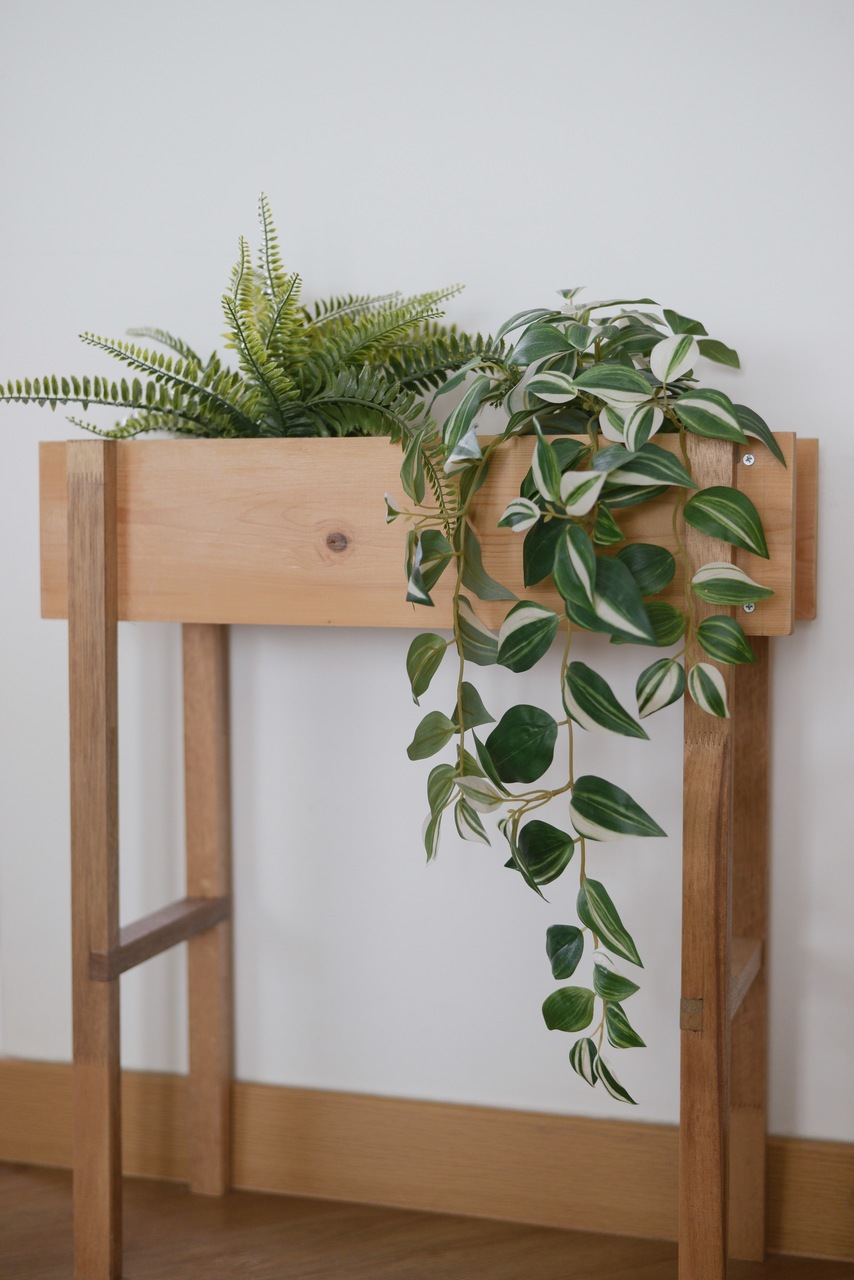
Even though you’re buying a faux plant, you should choose artificial plants that look like they belong in your area.
After all, a faux plant that clearly wouldn’t survive indoors (or even grow locally) is never going to pass off as a real plant.
Stick with timeless and versatile greenery like olive trees, ficus, eucalyptus, or a classic fiddle leaf fig.
These styles aren’t overly seasonal and tend to blend naturally into most home decor, no matter the time of year.
Avoid bright colors

If you take a good look outside your window and really observe the greenery around you, you’ll find forest green, olive green, mild yellow, and earthy brown and red hues.
Look even closer, and you’ll realize that real plants usually have a muted color palette and natural color variations.
That’s why one of the biggest giveaways of a fake plant is when the color is too bright or completely uniform.
When I was browsing in-store, the artificial plants were all grouped together. This actually made it a lot easier for me to spot the fake-looking ones.
The first ones that stood out as fake to me were the ones with overly bright or unnaturally colored leaves. They just looked super plasticky and cheap.
So if you want faux plants that look real, skip anything too vibrant or identical.
Always look out for plants with nature-inspired tones instead.
And if you’re ever unsure, just snap a photo of the greenery outside and pull it up to compare!
Zoom in on the details
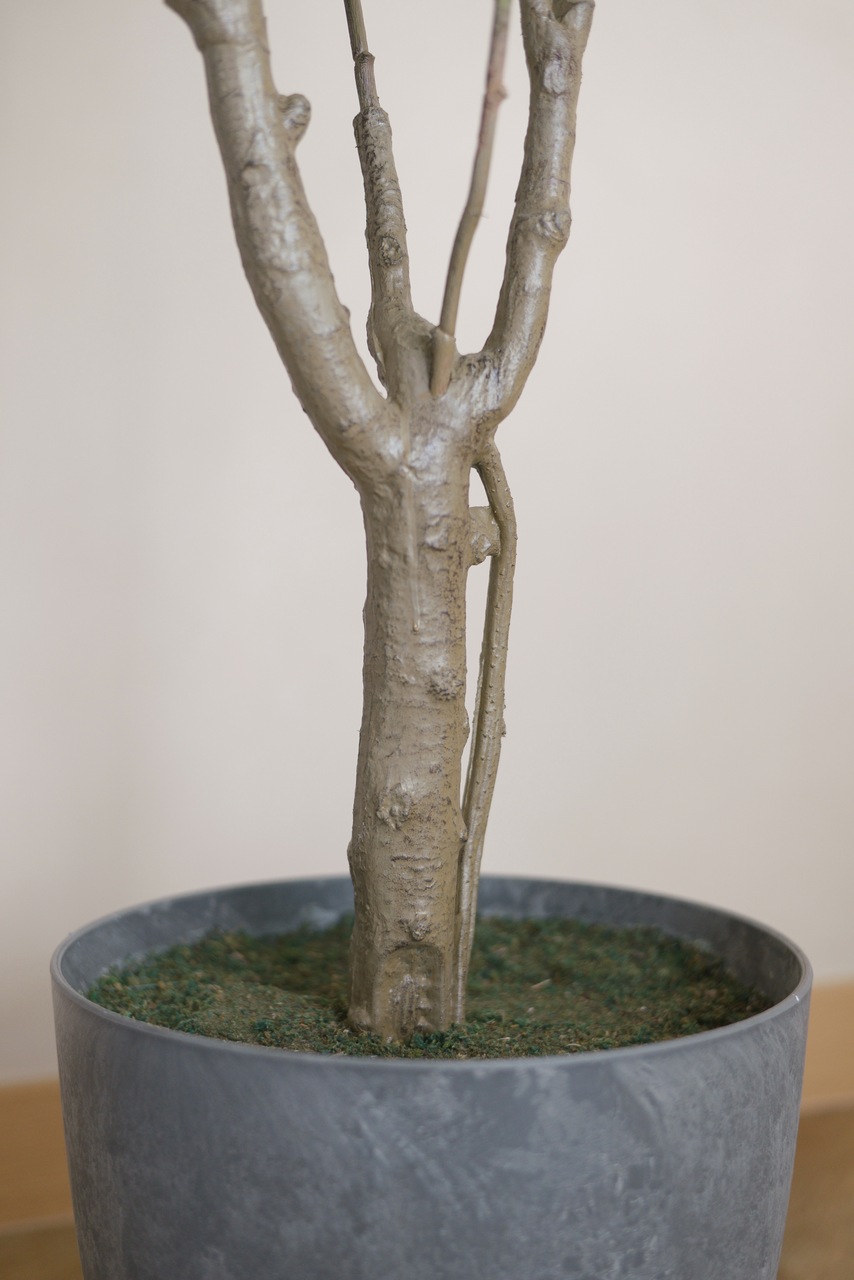
I was in the store browsing for hours because I was literally inspecting every single detail of each plant.
First, I looked at the leaves and checked for the following details:
- Do they have realistic veining? The more texture and detail the leaves have, the realer the plant looks!
- Are they opaque or see through? Opaque leaves are a good sign, as they look more natural.
- Do they look the same on both sides? Real leaves usually don’t look identical on both sides.
- Are they matte or shiny? Matte with a slight satin sheen mimics real leaves whereas anything overly shiny looks like plastic.
Then I moved on to the stems, branches, and trunk.
- Are they all the same size? Some variations will make them look way more realistic and natural.
- Are they perfectly smooth and glossy? This is a big no-no. Look out for a rough surface, small bumps, and imperfections.
If you’re shopping online, hit the zoom button and take a closer look at the photos.
These small details make all the difference in choosing faux plants that look real.
Examine the texture

You might not be able to do this when shopping online, but if you’re in-store, take a minute to actually hold the leaves, stems, and trunk and get a feel for the texture.
Leaves should have a mix of smooth and slightly textured surfaces to mimic the natural variation you’d see on a real plant.
As for the stems, branches, and trunk, look for rough, uneven textures – just like the kind you’d find if you ran your hand along a real tree outside!
If you’re shopping online, zoom in on the product photos and check for close-ups of the leaves, branches and trunk.
If everything looks too smooth, flat, or shiny, chances are the plant is not going to look realistic in person.
And, remember to check out the reviews! They often have real-life photos that are way more telling than (airbrushed) product images.
Embrace imperfections
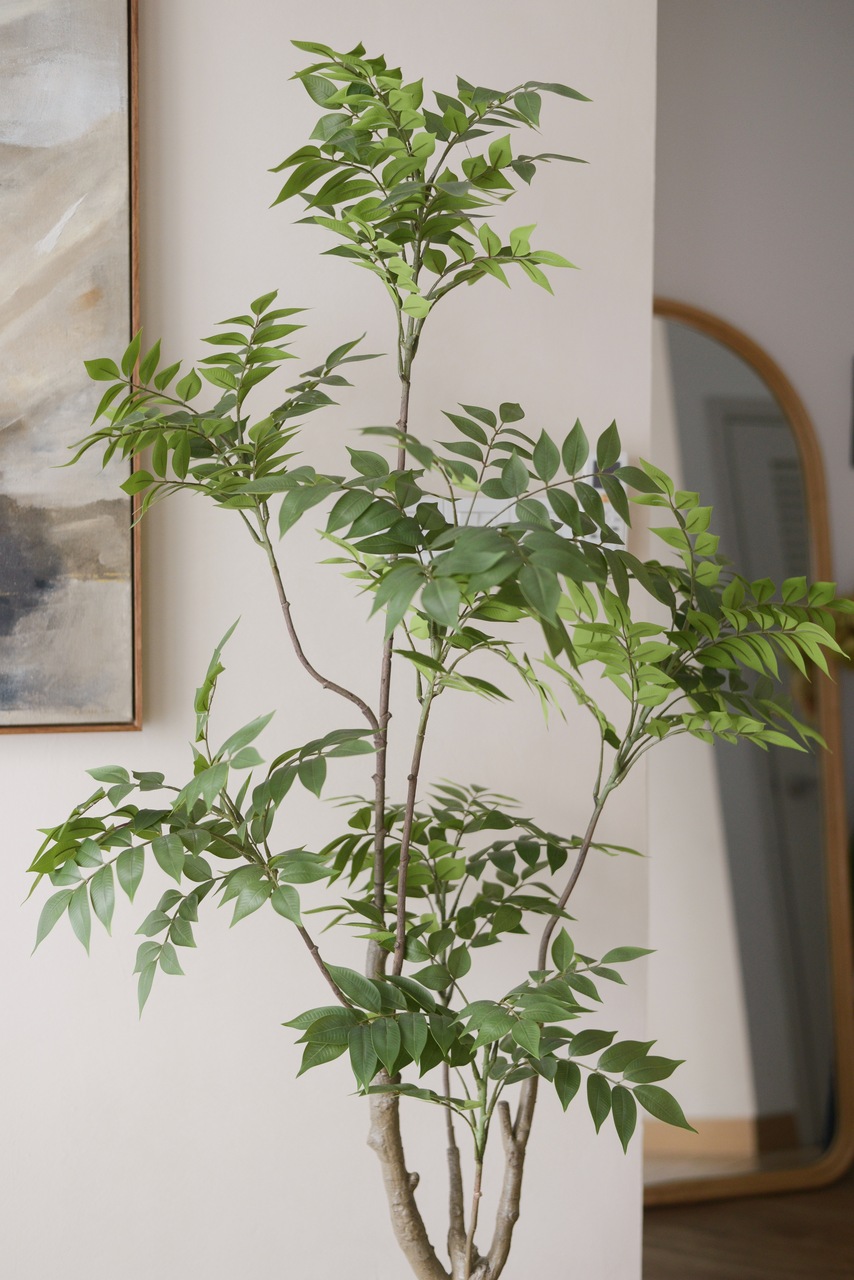
I know it feels strange to embrace imperfections when you’re buying something brand new.
But, when it comes to choosing faux plants that look real, these little flaws are exactly what you need to look out for!
At the store, I noticed the most realistic-looking plants weren’t perfect at all.
The branches were not symmetrical. Some had more leaves, others had fewer.
A few leaves had different shades of green and some had slight bends.
The stems weren’t identical either – some had bumps or subtle twists that gave them a more natural look.
If a plant looks too polished or too perfect… it’s probably going to read as fake.
Pick the right size for your space
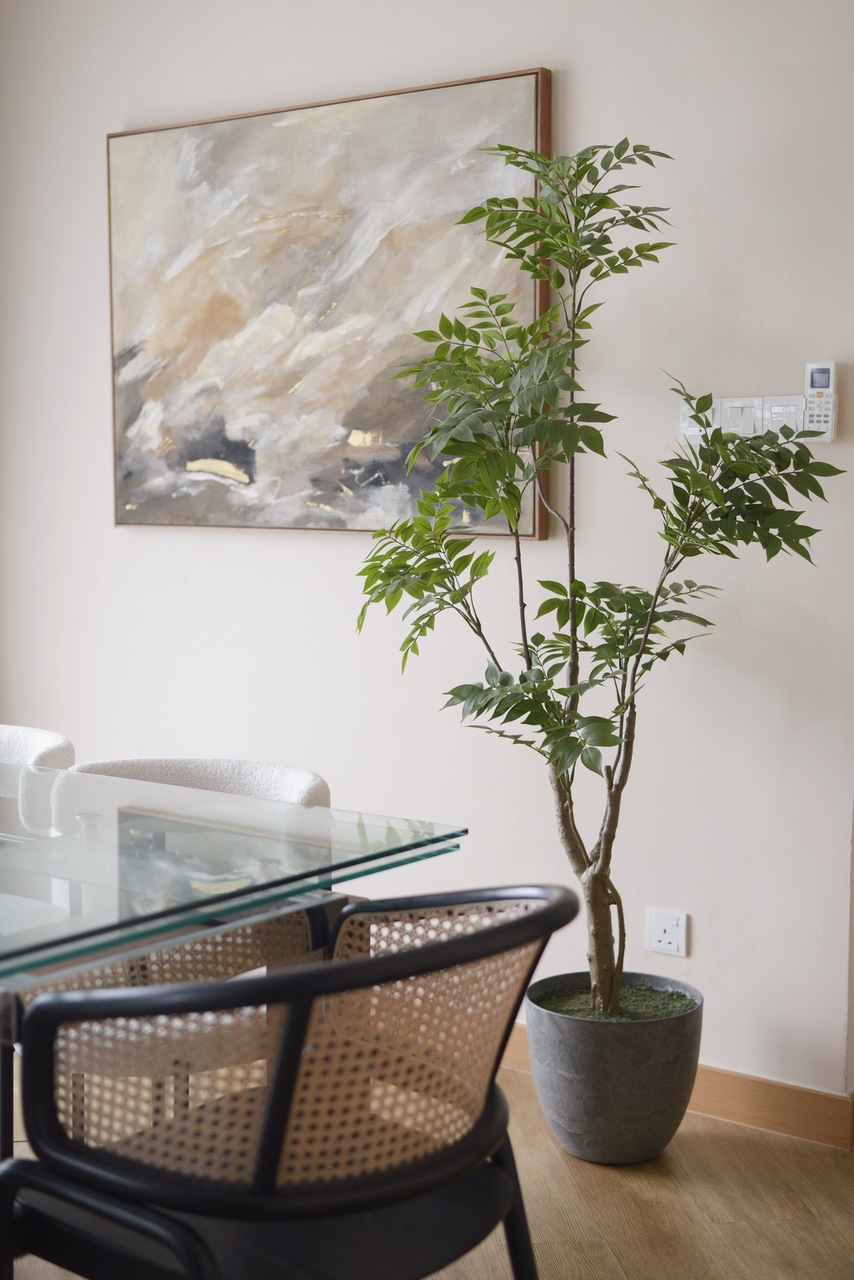
One of the most common mistakes I see is people choosing the wrong plant size for their space.
Even if the plant itself looks super realistic, it’s going to look off if it’s too small for the room.
Scale is important when it comes to purchasing and positioning artificial plants.
A tiny plant looks lost and out of place in a large, open space. And trust me, that’s the complete opposite effect you’d want from a faux plant!
A faux plant looks real if it looks like it belongs, almost as if like it’s been growing there all along.
When in doubt, size up and go for a taller tree. A slightly larger plant almost always looks better than one that’s too small.
Invest in quality materials
These days, most faux or artificial plants are made from a mix of materials like polyester, polyurethane, latex, and silicone.
Unless you’re super familiar with each material, it can be challenging to tell which one is “better” just by looking.
When I was in my local store, I noticed that the higher the price tag, the more realistic the faux plant looks.
Of course, that’s not always the case – I’d love to hear your experience, please drop a comment if you’ve found a hidden gem!
But from my experience, the more detailed and better-constructed plants are usually more expensive.
These usually come with wired stems and leaves (which let you bend and shape them into a more natural position) and hand-painted trunks, branches, and stems.
Upgrade the pot it came in

Many artificial plants come in tiny black plastic pots.
Not only do they instantly give away that they’re fake, but they also cheapen the entire look!
Let’s face it, large plants can’t thrive in tiny pots in real life.
A tiny pot will only stump the plant’s growth.
Plus, its roots will eventually outgrow the space and break the pot. (Sadly, I speak from experience…)
So if your faux plant is still sitting in that default tiny black pot… everyone can tell it’s fake.
The easiest fix? Repot your plant! Pop it into a larger, more substantial pot.
I recommend going with a ceramic or terracotta pot since these materials are what we typically use for real plants in our gardens.
If the plant sits too low, stack empty shoeboxes or a few bricks inside to boost the height.

Then cover the top with real potting soil or moss for a fresh-out-of-the-nursery look.
This one simple switch makes a huge difference in how real your faux plant looks!
5 Simple Hacks To Make Your Faux Plants Look Real
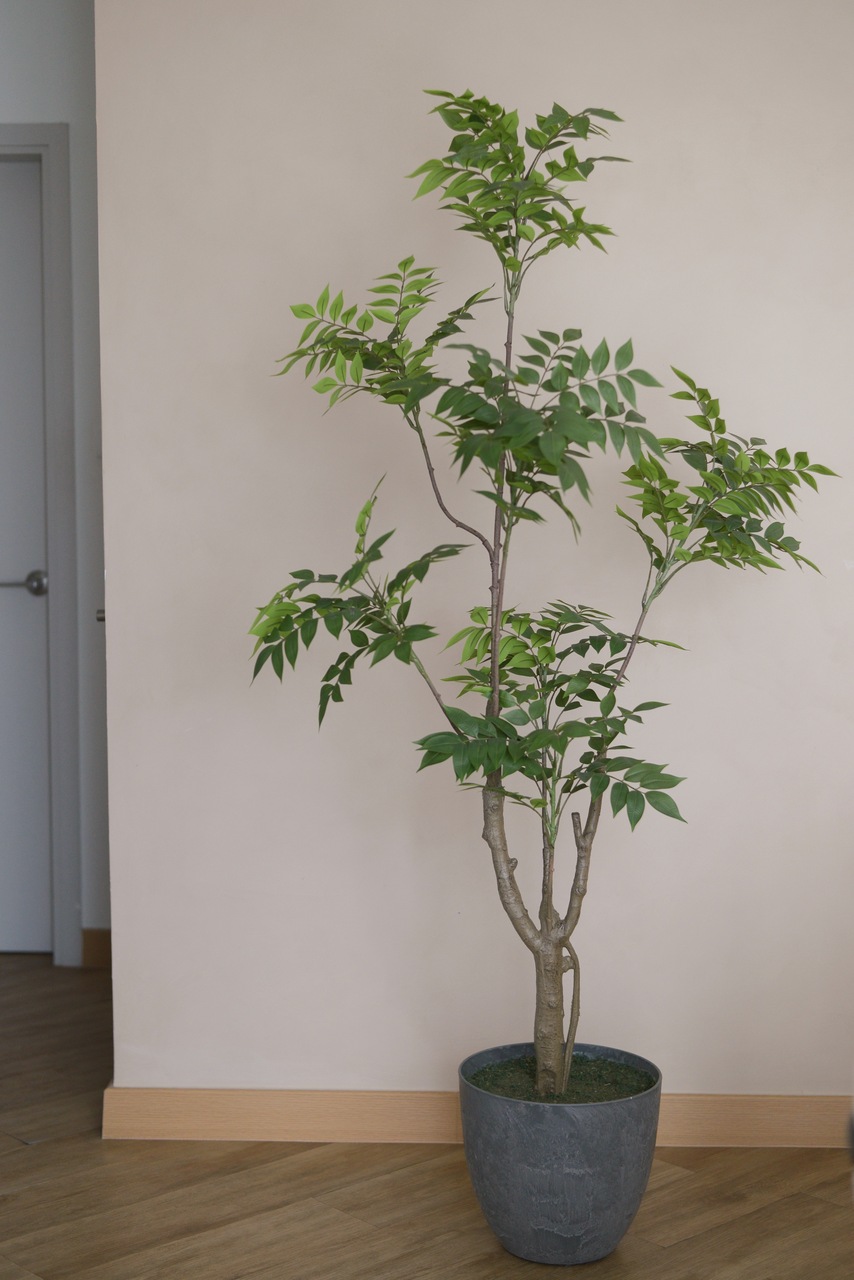
If you already have a couple of artificial plants at home, these 5 simple hacks can help make your faux plants look real.
Fluff and shape your faux plants
If your faux plant comes in a box, you’ll need to take some time to fluff and shape them, or the leaves will look flat and clumpy. A little fluffing and adjusting goes a long way!
Don’t forget to gently bend the wired stems and leaves so they don’t sit too stiff or look perfectly symmetrical.
Repot faux plants
Ditch the cheap plastic container your faux plants come in.
Repot them in a ceramic or terracotta pot with real soil, moss, or stones on top to hide the base.
Dust your faux plants frequently
Give your faux plants a good dusting before going in with a soft cloth to keep them looking fresh.
Keep your faux plants away from sunlight
Keep your faux plants out of direct sunlight because UV rays can cause artificial plants to fade, which will make them look fake over time.
Instead, place them in spots where you would place real plants, preferably without harsh light hitting them all day!
Mix faux plants with real plants
If you have a mix of real and faux plants, scatter them around your home together.
I have both types in my home, and I can assure you this trick makes the faux plants less noticeable.
Can I Use Faux Plants Outdoors?
I know there are some UV-treated outdoor faux plants that are great for covered porches, patios, and balconies.
I’ve also heard that using a UV-protectant spray helps provide extra protection and makes them last longer outside.
Personally, I haven’t tried placing a faux plant outdoors yet. I’ve seen cafes do it, and honestly… they end up looking faded and sad pretty quickly.
On that note, constantly replacing them feels expensive and wasteful.
Anyway, I might grab one soon just to test it out and report back.
In the meantime, have you tried it? I’d love to hear your tips or tricks!
My Picks: Faux Plants That Look Real
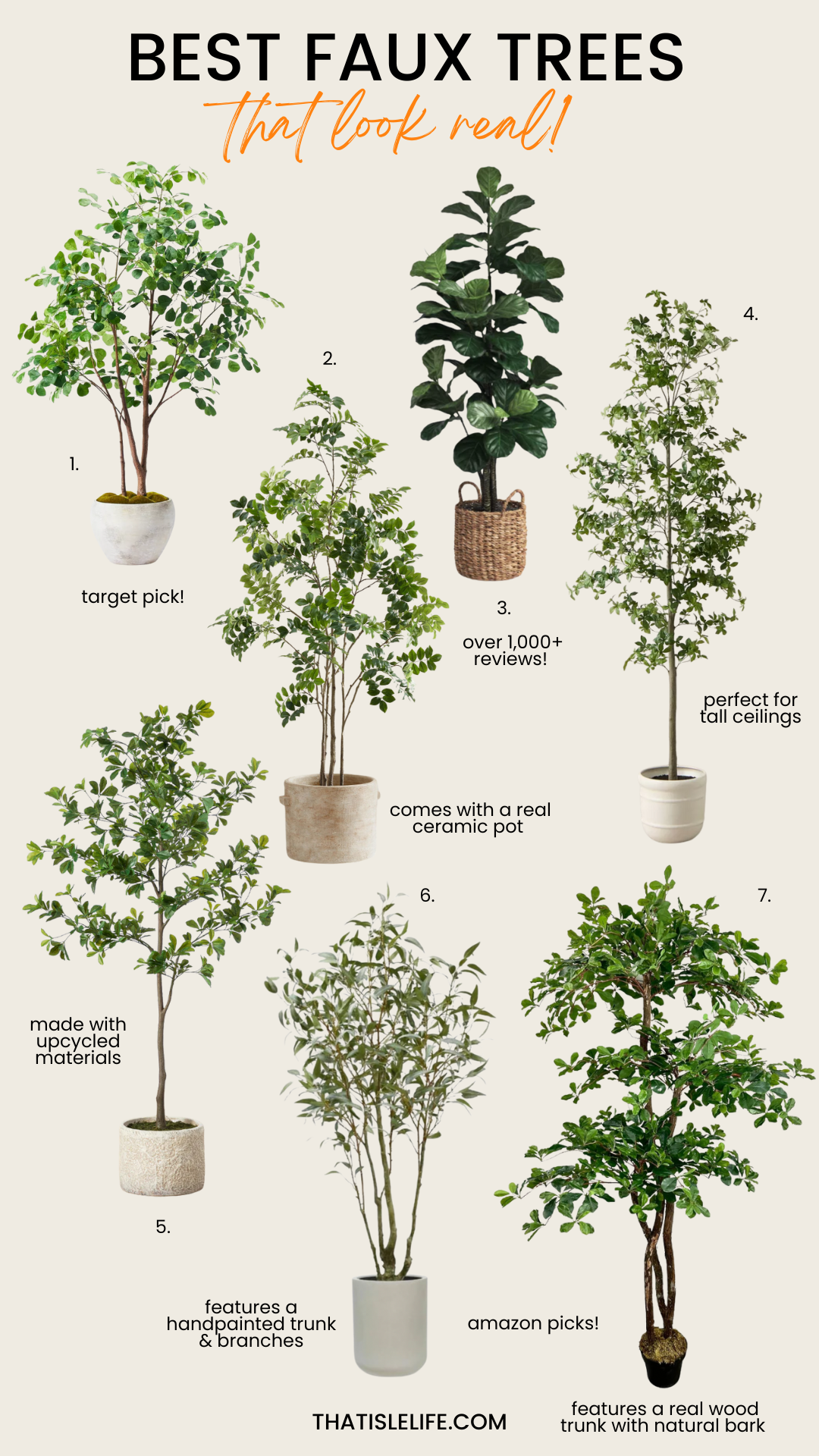
1. 72″ Artificial Ficus Tree // 2. Faux Leaf Green Tree // 3. 66” Faux Fiddle Leaf Fig Tree in Wicker/Rattan Basket // 4. 8′ Faux Gypsophila Leaf Potted Tree // 5. Shady Lady Faux Tree // 6. Faux Willow Eucalyptus Tree // 7. 6.5ft 3-Tier Italian Black Olive Leaf Artificial Tree
